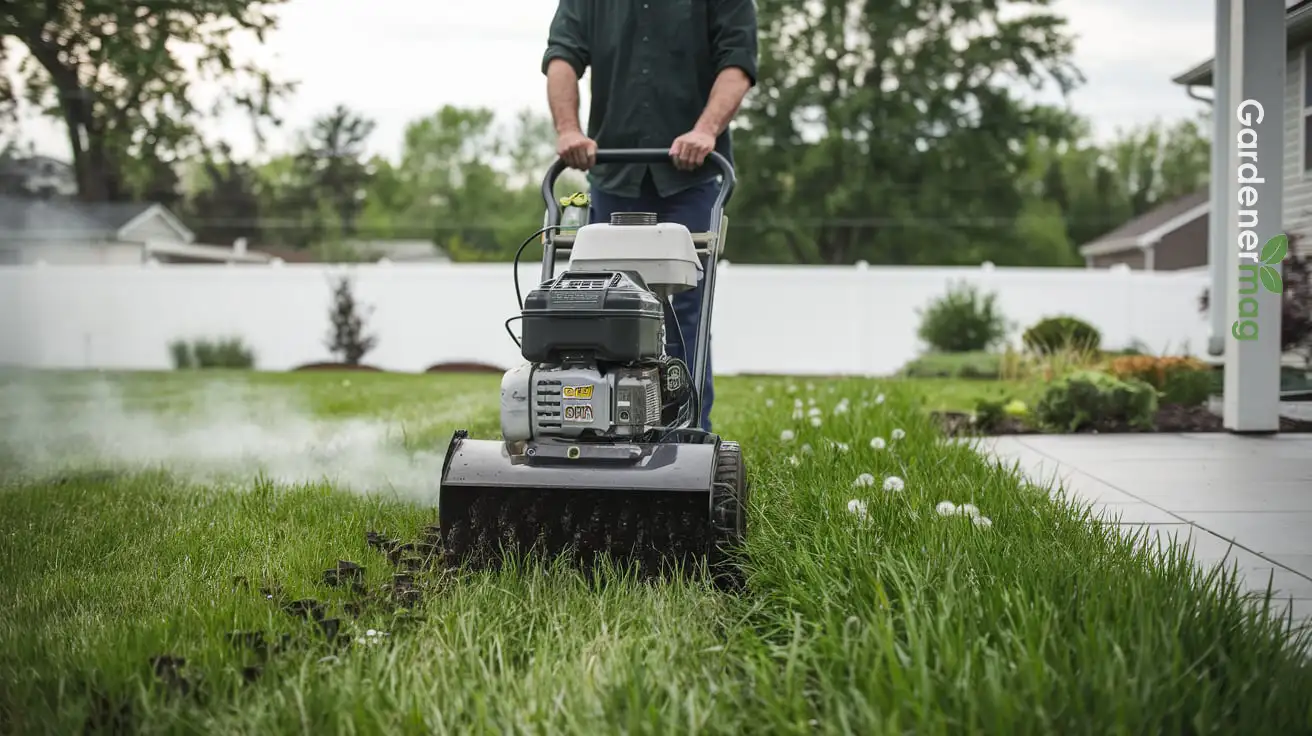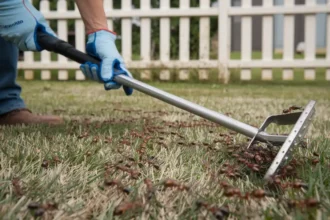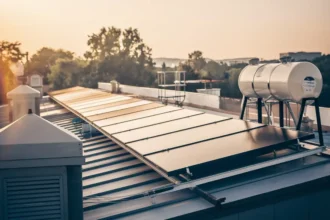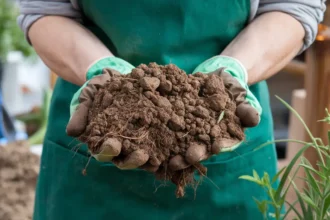Did you know that one of the best ways to keep your lawn looking its best is by aerating it?
Perhaps you know this already but don’t know the best time to aerate your lawn.
In this lawn care guide, we will discuss the ideal time to aerate your lawn as well as all the tips you need to aerate rightly. Read on.
What Is Lawn Aeration?
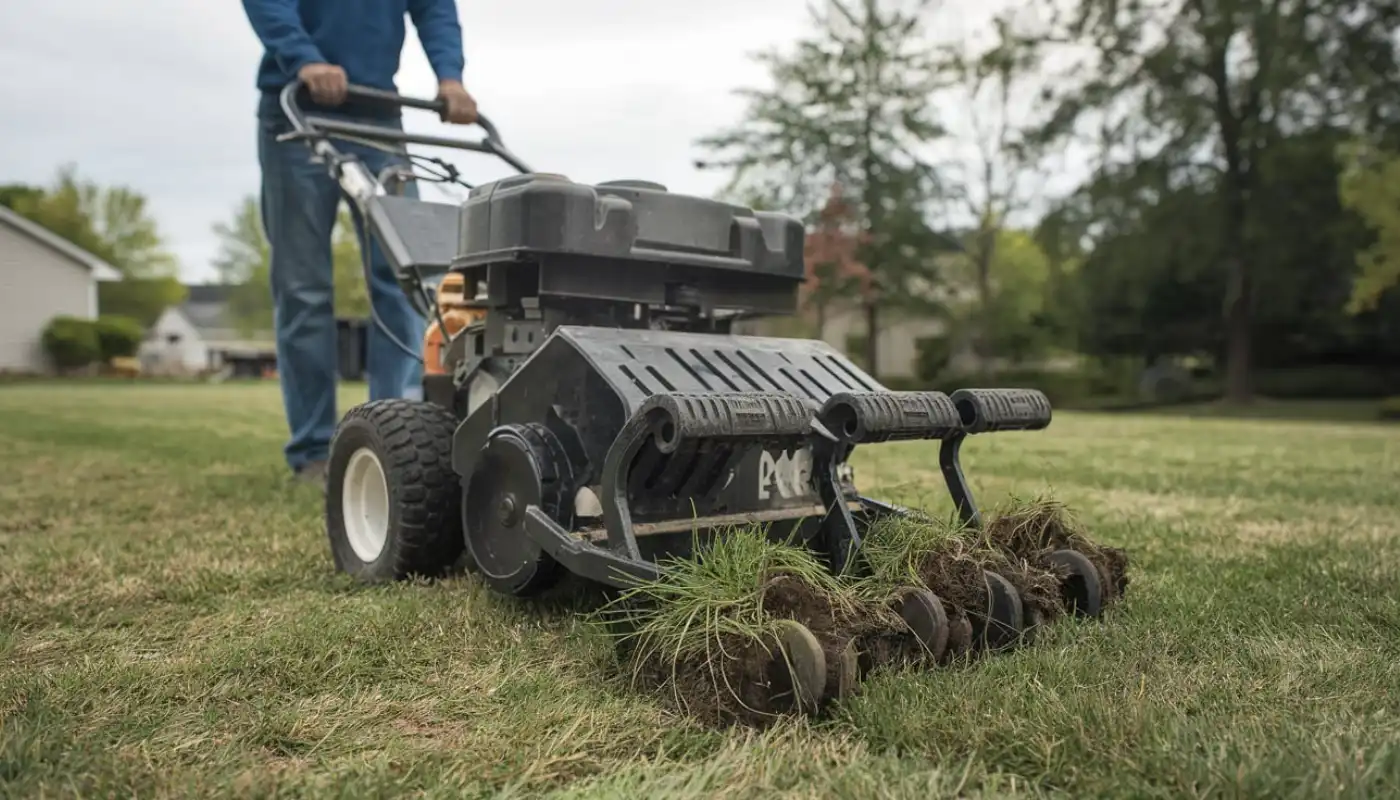
This is for beginner gardeners who may be wondering what lawn aeration is.
Lawn aeration is the procedure for removing compacted soil, blocks of soil, and/or thatch from your lawn.
When the soil from your lawn is compacted or covered with thatch, the flow of water, air, and essentials needed to support thicker, healthier turf growth is inhibited.
However, aerating your lawn helps to loosen the compacted soil and allows water, vital air, and essential nutrients to reach the roots.
In a nutshell, lawn aeration, also called lawn coring or lawn aerifying, creates holes in the soil surface to alleviate soil compaction, aerate the soil, and enhance grass growth.
When Is The Best Time For Lawn Aerifying?
Although most experts will suggest early fall as the best time to aerate your lawn, we recommend that you aerate the lawn when your grass is in its peak growing period.
Your grass’ peak growing period is usually the best time for core aeration as it helps your grass to quickly recover.
Hence, consider late spring through early summer for warm-season grasses, and early spring or early fall for cool-season grasses.
Aeration during these periods will help the nutrients to reach the grass root system.
However, if your lawn has heavy clay soil, we recommend that you should aerate every year. If your lawn has sandy soil or is growing well, aerating can be done every two to three years.
Signs That You Need To Aerate Your Lawn
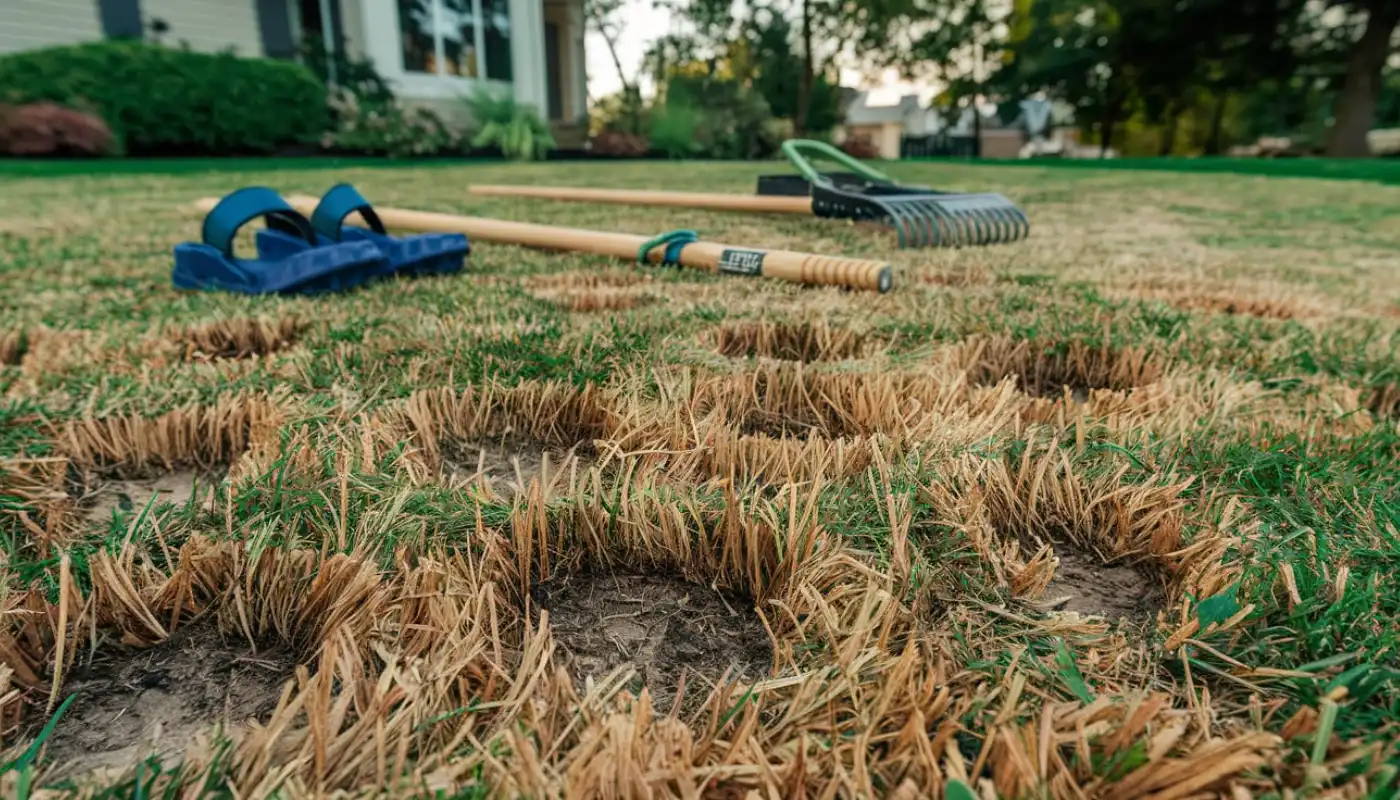
A vibrant green lawn that is also growing well may not need aeration. However, here are some signs that you need to aerate your lawn:
When there is a thick layer of thatch on top of your lawn
Thatch is a layer of dead grasses and roots, living plant materials, and organic matter that accumulates between the soil and the green grass blades.
A thin layer of thatch is beneficial. It can help prevent weeds, reduce water loss via evaporation, and protect glasses from frost damage.
However, a thick layer of thatch of more than ½ inch can harm your lawn. It can prevent oxygen, water, and necessary nutrients from reaching the root system.
Aeration can help to break and decompose the thatch faster.
If your lawn receives heavy foot traffic
If your lawn receives heavy foot traffic or if kids and pets play on your lawn regularly, this can compact the soil.
Aeration will help to loosen up the soil, enabling new grasses to grow.
If your lawn has clay soil
Clayey soil is very dense and does not allow the free inflows of air, water, or nutrients. Having such soil in your lawn can lead to an unhealthy grass growth.
Nevertheless, aerating can help break up the soil and improve percolation.
When you have puddles forming on your lawn
Poor drainage can lead to puddles forming on your lawn, especially after a rainfall. As the water dries up gradually, the soft puddle soil tends to harden, hampering nutrient, air, and water free flow into the soil.
Luckily, aeration can help reduce puddling.
Thinning grasses
Although many reasons cause thinning, one of the reasons for thinning grasses is compaction. When the soil in your lawn is compacted, the roots will not grow properly.
However, aeration helps to reduce compaction and improve overall lawn health.
Other signs of compacted soil include:
- Yellow, brown, and discoloured areas in your lawn.
- Poor water absorption.
- Dying grass
When your lawn soil fails the screwdriver test
Try to insert a screwdriver into the soil. If you face some difficulties, your lawn needs aeration. You can also use a pencil if you can’t get a screwdriver.
How To Aerate Your Lawn
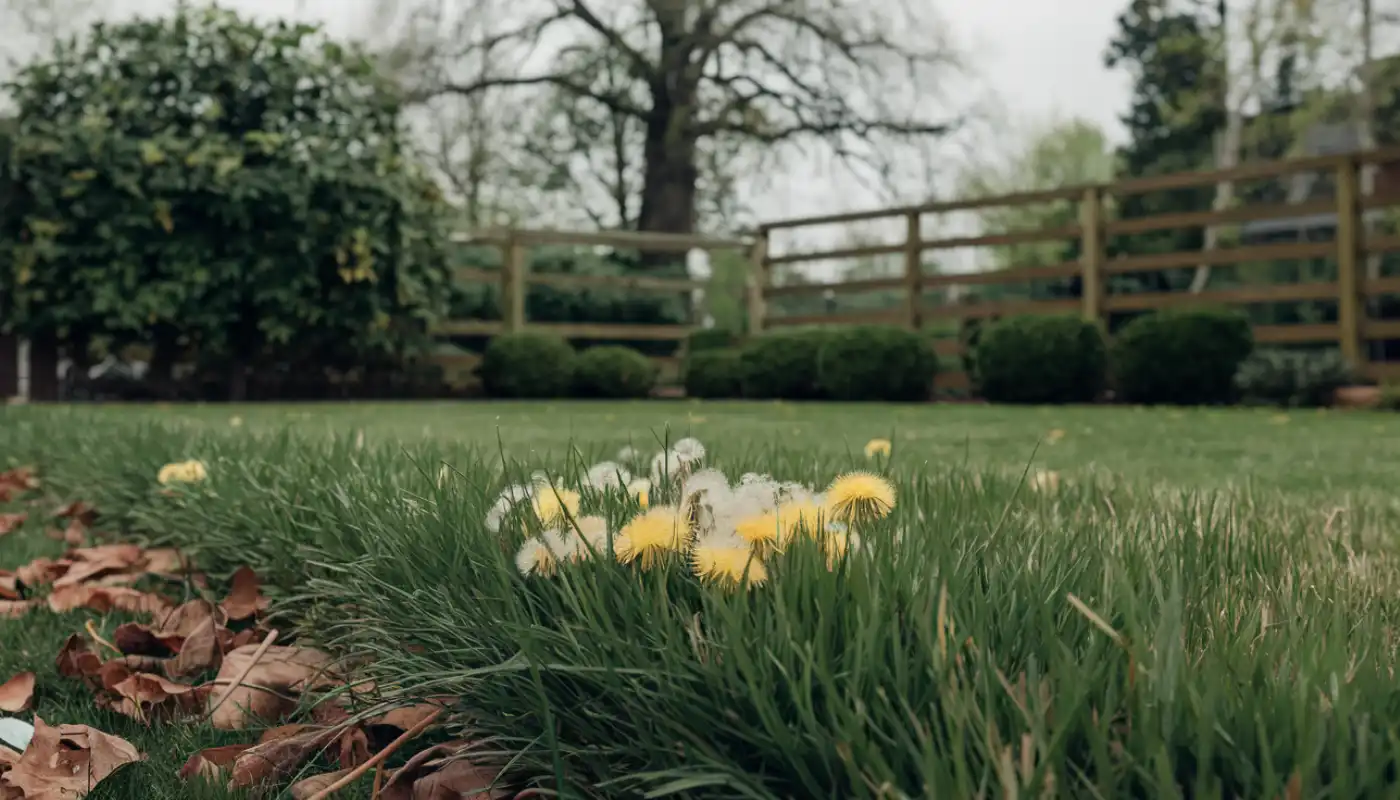
If you notice any of the signs above, then it’s time to aerate your lawn.
Aeration is a very simple procedure. It involves making small holes in the soil deep enough to reach the roots of the grass. This enables air, water, and nutrients to easily reach the roots, helping the grass to grow more vigorously.
You can aerate your lawn using any of these two methods – using a manual aerator or a powered aerator.
Any of the aeration methods will remove plugs of soil from your lawn.
Manual aeration involves pushing a garden fork into the soil all around the lawn to make holes. You may need to slightly water your lawn a day before aerating to soften the soil.
Powered aerators have rotating spikes that easily penetrate the soil. If your soil is lightly compacted, run the aerator over your lawn once with the aerator, following the directions for use.
However, if your soil is seriously compacted, you may need to run the aerator over your lawn twice. Let the second application go perpendicular to the first.
Whichever method you use, water your lawn well once you have finished aerating it.
To dethatch your lawn, you can use a dethatching rake, especially if you have a small lawn, or rent a dethatcher, also called power rake, verticutter, or vertical cutter, for a large lawn.
Prior to dethatching, don’t fertilize your lawn and mow your lawn to half its normal height.
Use a dethatching rake the same way you would use a regular rake to remove the buildup.
Conclusion
Hope you found our lawn care guide above very useful. In summary, the best time of year to aerate your lawns depends on the type of soil and grass you have – Clayey soil or sandy soil, cool-season grasses or warm-season grasses.
In general, aerate lawns when the grasses are still actively growing and the soil is moist. Doing this will help your lawn recover quickly.
Are you facing an ant invasion in your lawn, here are effective ways to kill ants in your lawn and get rid of ants fast.
Frequently Asked Questions (FAQs)
Your lawn needs aeration if it is compacted, has poor drainage, and/or has a thicker layer of thatch. Aeration removes the compaction, allowing water, air, and nutrients to reach the grass roots easily. Some signs that your lawn needs aeration include:
Thick thatch
Hard, compacted soil
Poor water percolation
Thinned grass
Puddles forming on your lawn
Yellow and discoloration patches
If your lawn has heavy clay soil, we recommend that you should aerate once a year. If your lawn has sandy soil or is growing well, aerating can be done every two to three years.


